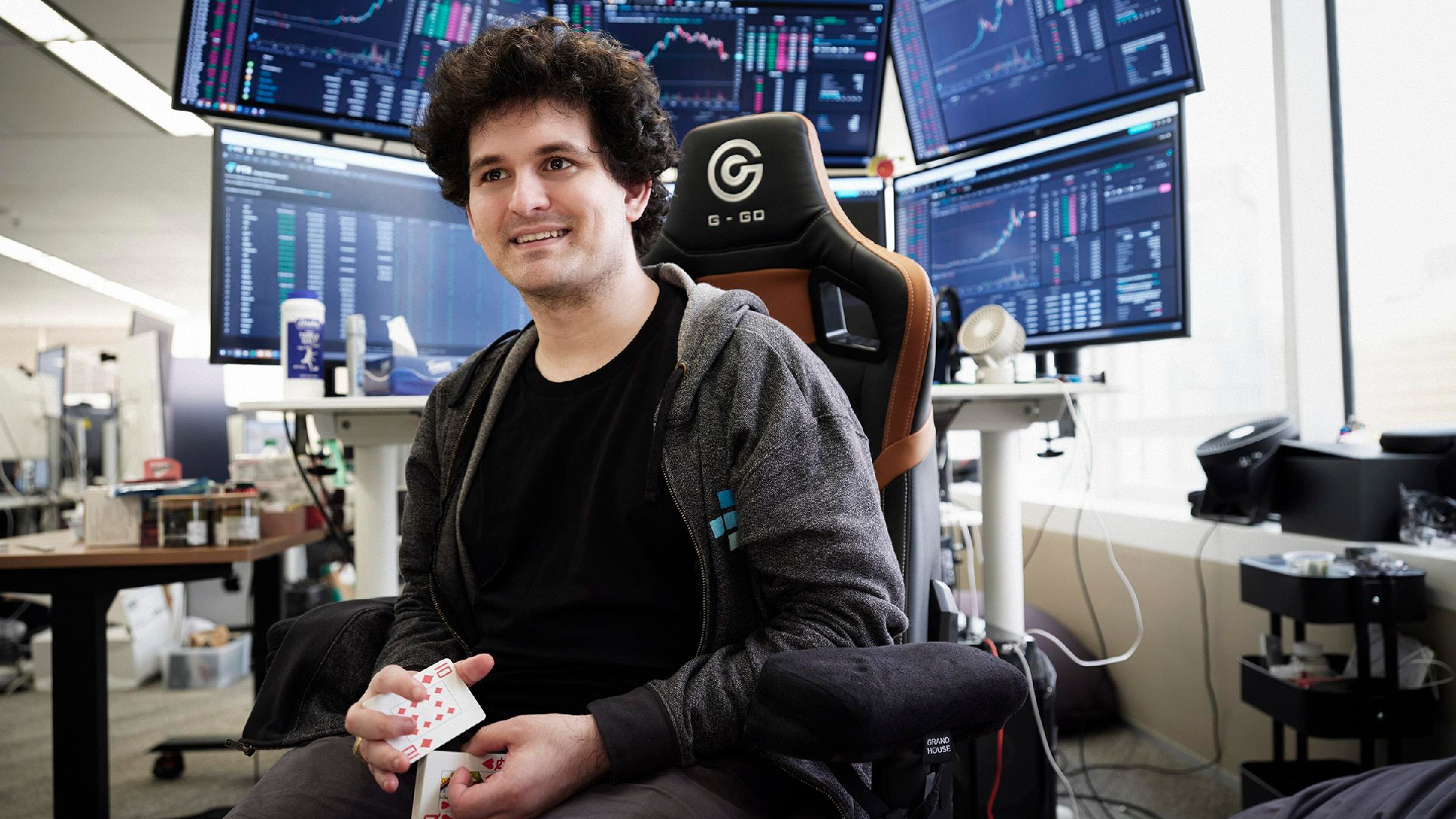Sam Bankman-Fried's Early Life and Career

Sam bankman fried ftx - Sam Bankman-Fried's early life and career played a pivotal role in shaping his trajectory as a prominent figure in the cryptocurrency industry. His upbringing, education, and professional experiences laid the foundation for his entrepreneurial endeavors, particularly the establishment of FTX.
Born in 1992 to two Stanford Law School professors, Bankman-Fried displayed a keen interest in mathematics and economics from a young age. He attended Crystal Springs Uplands School in Hillsborough, California, where he excelled in academics and extracurricular activities. Notably, he participated in the Math Olympiad and served as president of his school's debate team.
Education
Bankman-Fried pursued his higher education at the Massachusetts Institute of Technology (MIT), where he studied physics and mathematics. During his time at MIT, he developed a strong interest in effective altruism, a philosophical concept that emphasizes maximizing positive impact on the world.
Do not overlook the opportunity to discover more about the subject of dex crypto.
After graduating from MIT in 2014, Bankman-Fried worked as a trader at Jane Street Capital, a proprietary trading firm. There, he honed his skills in quantitative finance and developed a deep understanding of financial markets.
Founding FTX
In 2017, Bankman-Fried co-founded Alameda Research, a cryptocurrency trading firm. Alameda Research's success allowed him to establish FTX in 2019, a cryptocurrency exchange that quickly gained popularity due to its low fees, user-friendly interface, and advanced trading tools.
Bankman-Fried's early life and career experiences, including his education, professional background, and interest in effective altruism, contributed to his success in the cryptocurrency industry. His strong academic foundation, combined with his practical experience in finance and trading, provided him with the necessary knowledge and skills to launch and operate FTX.
The Founding and Rise of FTX

Sam Bankman-Fried's decision to establish FTX in 2019 was driven by his belief that the cryptocurrency market lacked a reliable and user-friendly platform. He aimed to create an exchange that would offer a seamless trading experience, cater to both experienced traders and newcomers, and promote innovation in the industry.
FTX's initial vision was to become the leading cryptocurrency exchange by providing a comprehensive suite of trading tools, low fees, and a commitment to security. It differentiated itself by offering a wide range of cryptocurrencies, including derivatives and futures, and by introducing innovative features such as its proprietary "matching engine" designed to optimize trade execution speed and efficiency.
Obtain access to crypto today to private resources that are additional.
Key Factors Contributing to FTX's Success
Several key factors contributed to FTX's rapid growth and success in the competitive cryptocurrency market:
- Strategic Partnerships: FTX forged strategic partnerships with leading players in the industry, such as Binance and Coinbase, which helped establish its credibility and expand its user base.
- Aggressive Marketing: FTX invested heavily in marketing campaigns, sponsoring high-profile events and partnering with influencers, which increased its visibility and attracted new customers.
- Innovative Products: FTX continuously introduced innovative products and features, such as its tokenized stock trading platform and its own native cryptocurrency, FTT, which fueled its growth and user engagement.
- Regulatory Compliance: FTX prioritized regulatory compliance, obtaining licenses and registrations in multiple jurisdictions, which instilled trust among users and institutions.
FTX's Business Model and Operations

FTX operated as a cryptocurrency exchange, facilitating the trading of digital assets between buyers and sellers. Its business model centered around charging fees for these transactions, with revenue primarily generated through trading commissions and other service charges.
Trading Mechanisms
FTX employed advanced trading mechanisms to provide users with a seamless and efficient trading experience. The exchange utilized a central limit order book (CLOB) model, which matched buy and sell orders at the best available prices. This ensured that traders could execute their orders promptly and at competitive rates.
Risk Management Strategies
FTX prioritized risk management to safeguard user funds and maintain the integrity of its platform. The exchange implemented various measures, including:
- Risk assessment and due diligence on all listed assets
- Real-time monitoring of market conditions and trading activity
- Use of cold storage and multi-factor authentication for asset security
Products and Services
FTX offered a wide range of products and services tailored to different user needs:
- Spot trading: Buying and selling of cryptocurrencies at current market prices
- Derivatives trading: Trading of futures and options contracts to hedge risk or speculate on price movements
- Margin trading: Borrowing funds to increase trading positions, amplifying potential profits and losses
- Staking: Earning rewards by holding and validating certain cryptocurrencies
- FTX Pay: A payment gateway for merchants to accept cryptocurrency payments
Regulatory Environment
FTX operated in a rapidly evolving regulatory landscape for cryptocurrencies. The exchange proactively engaged with regulators and sought to comply with applicable laws and regulations. This included obtaining licenses and registrations in various jurisdictions and implementing anti-money laundering (AML) and know-your-customer (KYC) procedures.
The FTX-Alameda Relationship
FTX and Alameda Research were two companies founded by Sam Bankman-Fried that were closely intertwined. Alameda was a quantitative cryptocurrency trading firm that provided liquidity to FTX, while FTX was a cryptocurrency exchange that allowed users to buy and sell cryptocurrencies. The two companies shared many of the same employees and investors, and Bankman-Fried had a controlling interest in both companies.
Conflicts of Interest, Sam bankman fried ftx
The close relationship between FTX and Alameda created several potential conflicts of interest. For example, Alameda was able to borrow money from FTX at below-market interest rates, which gave it an unfair advantage over other traders on the exchange. Additionally, Alameda was able to use its position as a market maker on FTX to manipulate the prices of cryptocurrencies, which could have benefited FTX at the expense of other traders.
Finish your research with information from crypto signals.
These conflicts of interest may have contributed to FTX's downfall. In November 2022, Alameda was revealed to have borrowed billions of dollars from FTX customer funds, which led to a run on the exchange and ultimately its collapse.
The Collapse of FTX
FTX, once the world's second-largest cryptocurrency exchange, collapsed in November 2022, sending shockwaves through the industry and beyond. The collapse was the culmination of a series of events that exposed the company's liquidity issues, regulatory shortcomings, and questionable business practices.Triggering Factors
The crisis began in early November when reports emerged that FTX had lent billions of dollars of customer funds to Alameda Research, a hedge fund owned by Bankman-Fried. This raised concerns about FTX's solvency, as it meant that the exchange did not have sufficient assets to cover its liabilities. As the news spread, investors began to withdraw their funds from FTX, leading to a liquidity crisis. The exchange was unable to meet these withdrawals, and on November 11, 2022, it filed for bankruptcy.Impact
The collapse of FTX had a significant impact on the cryptocurrency industry. It eroded trust in centralized exchanges and led to a sharp decline in the prices of cryptocurrencies. The collapse also raised questions about the regulatory oversight of the industry and the need for greater consumer protection. The wider financial markets were also affected by the FTX collapse. The bankruptcy filing led to a sell-off in crypto-related stocks and a loss of confidence in the industry as a whole.The Aftermath and Investigations: Sam Bankman Fried Ftx
The collapse of FTX has sparked a series of investigations by regulatory authorities and law enforcement agencies. The US Securities and Exchange Commission (SEC) is investigating whether FTX violated securities laws, while the Commodity Futures Trading Commission (CFTC) is looking into potential violations of futures trading laws. The US Department of Justice is also conducting a criminal investigation into the company's collapse.
Potential Legal Consequences
Sam Bankman-Fried and other individuals involved in FTX's operations could face a range of legal consequences. They could be charged with securities fraud, wire fraud, money laundering, and other financial crimes. If convicted, they could face significant prison sentences and fines.
Lessons Learned and Regulatory Implications
The collapse of FTX has highlighted the need for stronger regulation of the cryptocurrency industry. Regulators are now considering new rules to protect investors and ensure the stability of the market. These rules could include stricter licensing requirements for exchanges, more robust disclosure rules, and increased oversight of the industry.
